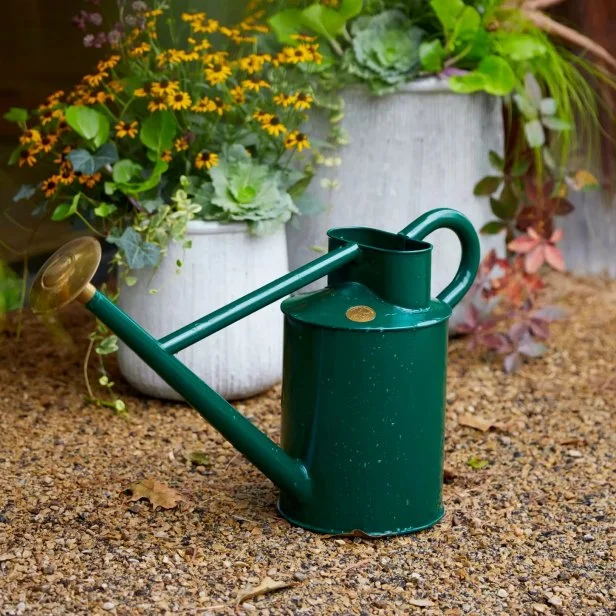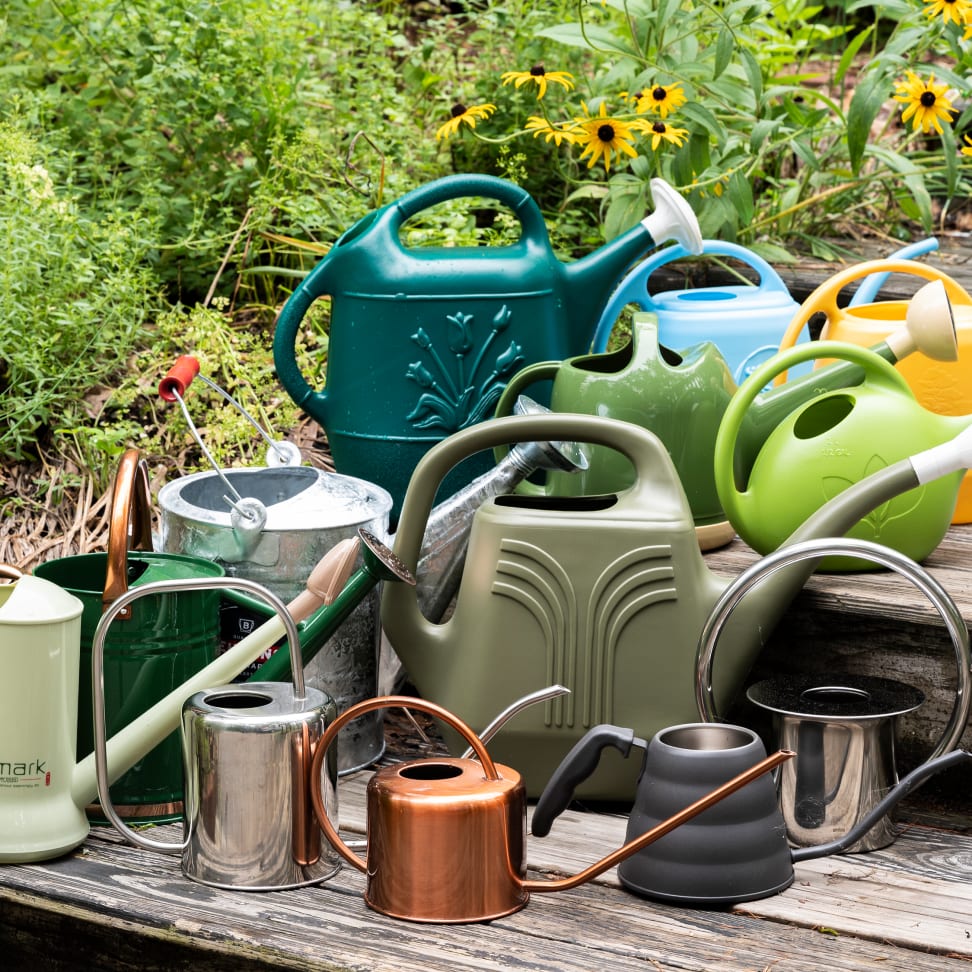Different Types of Watering Cans
Finding the best watering can for your gardening needs involves looking at various types. Material, size, and spout design are key factors to consider. Let’s delve into these aspects to help you make an informed decision.
Materials and Durability
Watering cans come in different materials. Each offers unique benefits and durability levels. Plastic cans are lightweight and cost-effective. They work well for indoor and light outdoor use. Metal cans, often made from galvanized steel, are sturdier. They withstand harsh weather and heavy-duty work. Look for rust-resistant coatings to ensure longevity. Stainless steel is another durable option that resists corrosion.
Capacity and Size
Capacity plays a huge role in choosing the best watering can. Smaller gardens do well with cans of 1 to 2 gallons. Larger spaces may require cans that hold up to 3 gallons or more. Remember, a full large can becomes heavy. Test the weight to make sure it’s manageable for you. The size should balance well in your hand and feel comfortable during use.
Spout Design and Water Flow Control
The spout design affects water flow control. A long, narrow spout offers precision to water small potted plants or seedlings. Detachable spouts or those with adjustable nozzles work well for different tasks. Choose a watering can with a spout that suits your garden’s needs. Avoid spouts that drip or leak to ensure efficient watering.
Factors to Consider When Selecting a Watering Can
Choosing the best watering can requires careful consideration of your garden’s unique requirements. Here are some key factors to keep in mind:
The Size of Your Garden Space
The size of your garden greatly impacts your choice. Small spaces benefit from smaller cans. They’re easy to maneuver and store. In contrast, large gardens might need cans with bigger capacities. This helps avoid frequent refills. But keep in mind, a bigger can means more weight to carry.
Plant Types and Watering Needs
Consider the types of plants you’re tending. Delicate flowers or seedlings need gentle watering. Choose cans with a fine rose attachment for this. Vegetables or larger plants may need more water. A can with a higher flow rate works better in this case. Make sure the watering can you select caters to the various needs of your plants.
Ergonomic Design and Comfort
Comfort is crucial when watering your garden. An ergonomic design helps prevent strain on your hands and back. Look for a can with a comfortable grip and balance. It should not be too heavy when full and should allow for natural posture while watering. This makes your gardening tasks more enjoyable and less tiresome.
Key Features of a High-Quality Watering Can
When selecting the best watering can for your garden, assess key features. These attributes ensure a can’s value and efficiency. Let’s examine essential features to look out for.
Leak Proof Construction
A high-quality watering can must have a leak-proof design. This prevents water loss and ensures proper delivery to your plants. Leak-proofing also saves time, as you avoid constant refills. Make a habit of checking for any holes or cracks before purchasing.
Balance and Handle Comfort
The handle should feel good in your hand, giving you control and balance. This comfort matters for easy watering, especially when the can is full. A well-designed handle reduces wrist strain. Pick a can that remains stable when set down and when you carry it around.
UV-Resistant Material and Longevity
UV-resistant materials are crucial for garden tools. Exposure to sunlight degrades some materials over time. UV-resistant watering cans maintain their integrity for years. This feature is particularly important for plastic cans that stay outdoors. Look for materials that can withstand the elements and frequent use.
Advantages of Metal vs. Plastic Watering Cans
When choosing the best watering can, the material is a crucial factor to weigh. Metal and plastic cans each have unique advantages that suit different gardening scenarios.
Pros and Cons of Metal Watering Cans
Metal watering cans often favor longevity and toughness. They are reliable for heavy-duty tasks and withstand rough handling. Most metal cans, especially those made from galvanized steel, resist rust. They offer a classic look that some gardeners prefer. On the down side, metal cans can be heavy, especially when full. This may make watering more taxing on your body. They can also dent if dropped and may be pricier than their plastic counterparts.
Pros and Cons of Plastic Watering Cans
Plastic watering cans shine in weight and cost-effectiveness. They are light, which makes them easier to carry and maneuver. This is great for gardeners who find heavy lifting a challenge. Plastic is ideal for quick, light tasks and generally costs less than metal. However, durability can be a concern. Plastic can degrade when exposed to the sun for long periods. It may crack in cold weather or when mishandled. While plastic cans offer a range of colors and designs, they might not match the durability and aesthetic of metal.
Innovative Watering Can Designs
Gardening has evolved, and so have the tools we use. Recent years have seen innovative designs in watering cans. They make watering more efficient and storage simpler. Below, we explore some of the latest designs in the market.
Collapsible Watering Cans
Collapsible watering cans are perfect for those with limited space. They are great for small apartments or for gardeners who need to transport their tools. These cans collapse to a fraction of their size when not in use. Most are made of durable, flexible materials like silicone. This makes them light, easy to store, and resistant to damage from dropping. When filled, they expand to accommodate a substantial amount of water, making them both practical and portable.
Automated and Self-Watering Cans
For those seeking convenience, automated and self-watering cans are a game changer. These advanced watering cans can help you save time. They water your plants on a schedule or when moisture levels drop. Some models connect to a water supply and use sensors to regulate watering. These cans are ideal for busy gardeners or for caring for plants when you are away. They help ensure that plants receive consistent moisture, which is key to their health.
Maintaining Your Watering Can
Proper maintenance ensures your watering can lasts longer and performs better.
Cleaning and Storage Tips
To keep the best garden can in great shape, follow these simple steps:
- Rinse after use: Prevent sediment build-up by rinsing your can with clean water.
- Dry thoroughly: After rinsing, empty the can and let it air dry to prevent mold.
- Store properly: Protect it from weather. Store indoors or in a shaded, dry area.
- Occasional deep clean: Use mild soap and water for a detailed cleaning yearly.
Remember to check for debris in the spout that could block water flow.
Replacing Parts and Rust Prevention
When parts wear out, replace them to extend your watering can’s life:
- Inspect seals and washers: They prevent leaks and should stay in good condition.
- Check the rose and spout: If they get damaged or clog, find suitable replacements.
- Rust prevention for metal cans: Apply rust-resistant coatings regularly.
- Keep joints and hinges oiled: This ensures smooth movement and prevents rust.
By following these guidelines, your watering can will remain functional and reliable for your gardening tasks.
Where to Buy the Best Watering Cans
Finding the best garden can might take you to various shopping venues. Let’s look at where to start your search.
Local Garden Centers versus Online Shops
Local garden centers are a treasure trove for gardeners. Here, you can pick up the best watering can and get expert advice. Staff often know their products well and can guide your choice. Plus, you see and feel the cans firsthand. Testing the balance and handle comfort is much easier this way. But, local stores may have a limited range. Prices can be higher compared to online shops.
Online shopping offers convenience and a vast selection. You can compare different watering cans quickly. Deals are easier to find, and reviews are just a click away. But you can’t physically inspect the products. There’s also the wait for delivery and the risk of shipping damage.
Choose based on your needs. If you value hands-on shopping, visit a local center. If variety and deals are your priority, online shops could be better.
Reviews and Recommendations
Reviews are valuable when selecting the best watering can. They offer real-world usage insights. Look for products with plenty of positive feedback. Sites like Amazon, Gardeners’ World, and Trustpilot are good places to start. Gardening forums and social media groups are also helpful for honest recommendations.
Don’t overlook word-of-mouth suggestions. Friends or family with gardening experience can point you to top picks. Armed with these tips, you’ll be set to find the best watering can for your garden’s needs.



